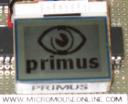Adding DMA to the SPI driver with the STM32F4
Sending data over SPI with the STM32 using polling is simple and reliable but your processor is blocked, unable to do anything else until the transfer is complete. Direct Memory Access (DMA) allows you to initiate a transfer of a block of data and then carry on doing something else…

